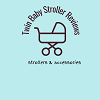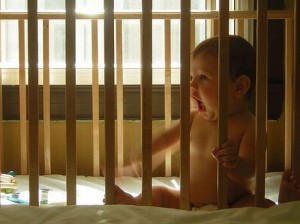Sudden Infant Death Syndrome (SIDS) or sometimes called “crib death” is defined as the unexpected sudden death of an infant that is unexplained by experts, forensics and death scene investigators. They cannot give a concrete history of this syndrome.
The cot or SIDS death that is referred to by some people is the sudden death of an infant younger than one year of age or usually younger than six months of age. SIDS is suspected when a previously healthy infant, is found dead in bed without any signs of distress. In most cases, no sign of distress is identifiable since all that happened is very sudden. It usually happens when the infant normally feeds well before being placed in bed to sleep.
Some may perceive SIDS as related to sleep and associates it with sleep positioning. There are cases that based on sleep position, it may have a contributory factor on SIDS. In most times, they had their baby sleep on prone position, stomach facing down. Due to this sleep factor position, there are campaigns and advertisements that encourages infants to sleep in supine position because this theory was based on the epidemiology of SIDS and the physiological evidence which shows that infants who sleep on their back have lower arousal thresholds and less slow-wave sleep.
As compared to infants who sleep on their stomachs or prone position, sleep is sound when a baby is placed in bed on a supine position or sleep on their backs. In human beings, infant who sleep most of the time, develops rapidly during early development. This development includes an increase non-rapid eye movement sleep or its sometimes referred to quiet sleep during the early stage of infancy specifically the twelve months of life, which is considered to have less or decreased rapid eye movement sleep. Thus it is said to have a brain stem defect that leads to slow arousal or worse which means not being able to arouse from deep sleep therefore increase the risk for SIDS.
SIDS is not predictable or preventable. It may predispose one to apnea or associated with apnea, the difficulty in breathing. Apnea of infancy are seen to be clinical conditions that are distinct from SIDS. Infants suffering with apnea may be managed by the use of electronic monitors prescribed by doctors that will track the heart rate and respiratory activity of the infant. Apnea monitors may not prevent SIDS. Newborns may experience abrupt changes in breathing, color, or muscle tone which includes respiratory activity which is sometimes believed to be associated with SIDS. Though there are no exact causation for SIDS, it is believed that it is not contagious or hereditary, SIDS is also not caused by immunizations or caused by bad parenting. When it occurs, neither one is to be blamed, nor is it anyone’s fault.


0 Comments